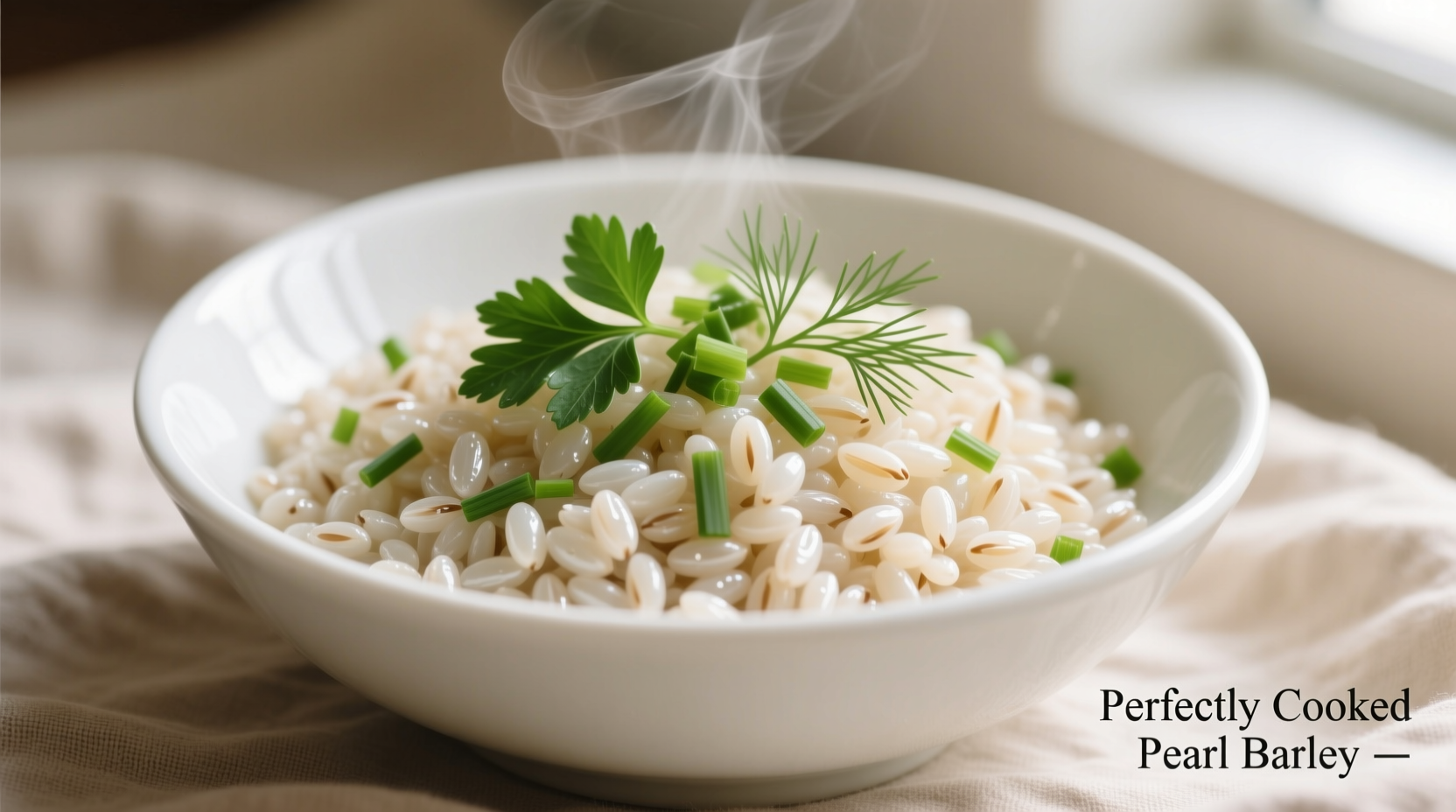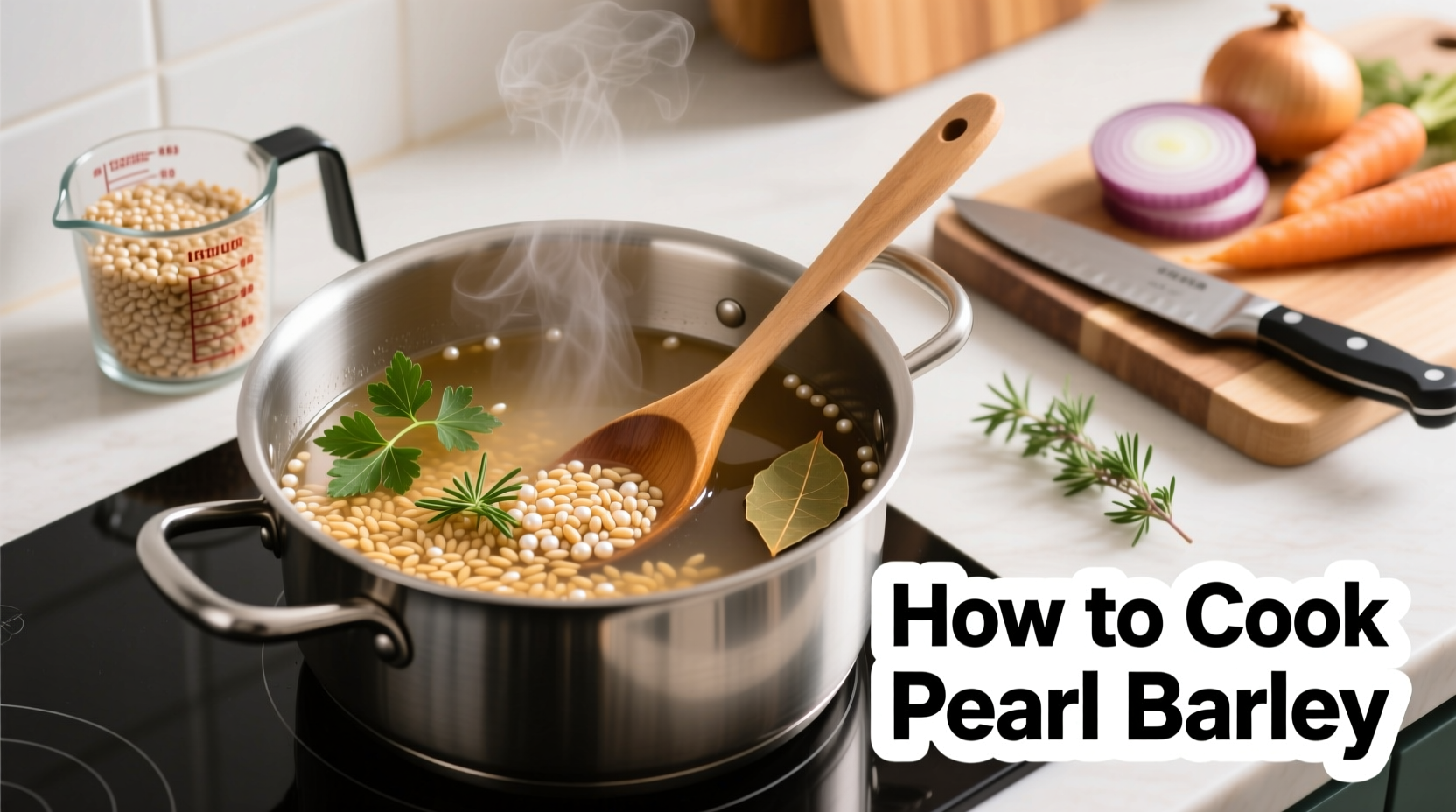Perfectly cooked pearl barley requires a 2.5:1 water-to-barley ratio, 25-30 minutes of simmering, and a crucial 10-minute rest off heat. This method yields tender yet chewy grains with a nutty flavor—ideal for salads, soups, and side dishes. Skip rinsing for creamier results or rinse thoroughly for separate grains. Never skip the resting period, as it completes the cooking process through residual heat absorption.
The Complete Guide to Cooking Pearl Barley Perfectly Every Time
Many home cooks struggle with pearl barley, ending up with either mushy grains or unpleasantly hard results. The secret lies in understanding this versatile whole grain's unique properties and applying precise cooking techniques. Unlike other grains, pearl barley maintains its distinctive chewy texture while absorbing flavors beautifully—making it perfect for everything from hearty winter stews to refreshing summer salads.
Why Pearl Barley Deserves a Place in Your Pantry
Pearl barley has been a kitchen staple for centuries across European and Middle Eastern cuisines. Unlike hulled barley (which retains its bran layer), pearl barley has had its outer husk and some bran removed through a 'pearling' process, resulting in faster cooking times while preserving most nutritional benefits. According to the USDA FoodData Central, a single cooked cup provides 7 grams of protein, 6 grams of fiber, and significant amounts of magnesium and selenium.
| Barley Type | Cooking Time | Fiber Content | Texture Profile |
|---|---|---|---|
| Pearl Barley | 25-30 minutes | Moderate | Chewy, tender |
| Hulled Barley | 55-60 minutes | High | Firm, substantial |
| Quick-cook Barley | 10-15 minutes | Low | Soft, less distinct |
Essential Preparation Techniques
Proper preparation makes the difference between mediocre and magnificent barley. While many grains require thorough rinsing, pearl barley benefits from selective rinsing based on your intended dish:
- For soups and stews: Skip rinsing to allow natural starches to thicken your broth
- For salads and pilafs: Rinse thoroughly in a fine-mesh strainer until water runs clear
- Always measure after rinsing: Wet grains pack differently than dry
Contrary to popular belief, soaking pearl barley isn't necessary for standard cooking methods. The University of Minnesota Extension confirms that soaking only reduces cooking time by about 15% while potentially leaching valuable nutrients into the soaking water.

The Foolproof Cooking Method
Follow these precise steps for consistently excellent results:
- Combine 1 cup rinsed or unrinsed pearl barley with 2.5 cups liquid (water or broth) in a heavy-bottomed pot
- Add ½ teaspoon salt AFTER grains have absorbed most liquid (adding too early toughens grains)
- Bring to a boil, then immediately reduce to the lowest possible simmer
- Cover tightly and cook undisturbed for 25-30 minutes
- Remove from heat and let stand covered for 10 minutes (critical for perfect texture)
- Fluff gently with a fork before serving
Troubleshooting Common Barley Problems
Even experienced cooks encounter issues with pearl barley. Here's how to fix them:
When Barley Turns Out Too Mushy
This usually happens from overcooking or using too much liquid. Next time, reduce water by ¼ cup and check for doneness at 22 minutes. If you've already overcooked a batch, spread it on a baking sheet to dry slightly before using in salads or as a binder in veggie burgers.
When Barley Remains Too Hard
Add 2-3 tablespoons of hot water and return to low heat for 5-7 minutes. The problem often stems from inconsistent simmering temperature—use a flame tamer if your burner runs hot. Properly stored dried pearl barley maintains quality for 6-8 months; older grains require additional cooking time.
Flavor Enhancement Secrets from Professional Kitchens
Elevate your barley beyond basic preparation with these chef-approved techniques:
- Add a strip of kombu seaweed during cooking for subtle umami depth
- Toast grains in dry pan for 2-3 minutes before adding liquid for enhanced nuttiness
- Finish with a splash of acid (lemon juice or vinegar) to brighten flavors
- Stir in fresh herbs during the resting period for maximum flavor infusion
Storage Guidelines Backed by Food Science
Proper storage maintains texture and prevents spoilage. The USDA recommends:
- Cool cooked barley within 2 hours of preparation
- Store in airtight containers with ½ inch headspace for 3-5 days in the refrigerator
- Freeze in 1-cup portions for up to 3 months (thaw in refrigerator overnight)
- Reheat with a sprinkle of water to restore moisture
Creative Ways to Use Perfectly Cooked Barley
Move beyond basic side dishes with these inspired applications:
- Mix with roasted vegetables and lemon-tahini dressing for a substantial grain bowl
- Substitute for rice in sushi rolls for added texture and nutrition
- Create a creamy barley risotto using the traditional gradual liquid addition method
- Add to meatloaf or burger mixtures as a moist binder alternative to breadcrumbs
Frequently Asked Questions
Can I cook pearl barley in a rice cooker?
Yes, use the same 2.5:1 liquid-to-barley ratio and select the 'brown rice' setting. Most rice cookers automatically adjust for the longer cooking time required by whole grains like barley.
Why does my pearl barley always stick to the bottom of the pot?
This happens when the heat is too high during simmering. Use the lowest possible setting and ensure your pot has a heavy bottom. Stirring during cooking also causes stickiness—let the barley cook undisturbed until the final fluffing stage.
Is pearl barley gluten-free?
No, pearl barley contains gluten as it comes from wheat-related grains. Those with gluten sensitivity should choose alternatives like quinoa or buckwheat instead.
How can I make pearl barley creamier for soups?
Skip rinsing the barley before cooking and add it directly to your soup pot. The natural starches will gradually release during cooking, creating a naturally thickened broth without needing additional thickeners.
Can I use broth instead of water for cooking pearl barley?
Absolutely—vegetable, chicken, or mushroom broth enhances flavor beautifully. For best results, use low-sodium broth and adjust salt after cooking to maintain proper seasoning control.











 浙公网安备
33010002000092号
浙公网安备
33010002000092号 浙B2-20120091-4
浙B2-20120091-4